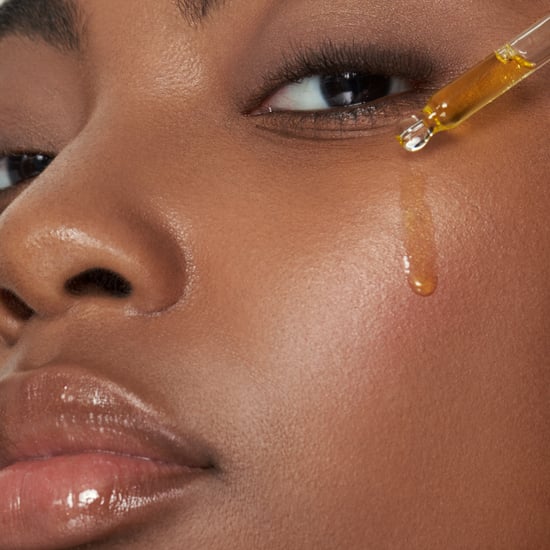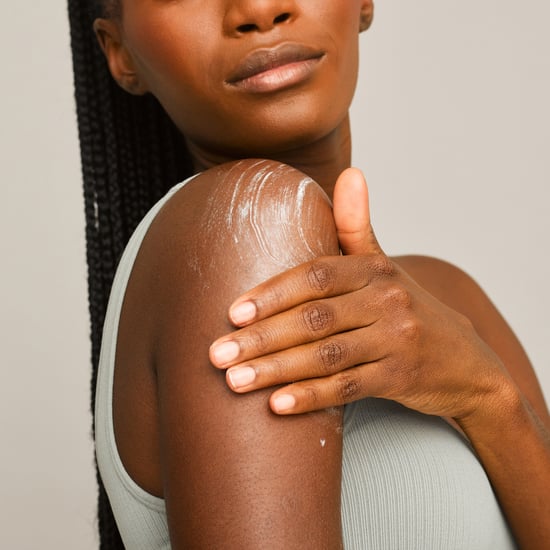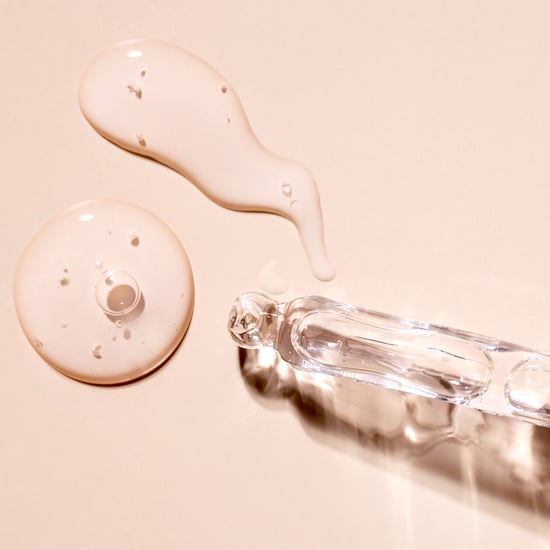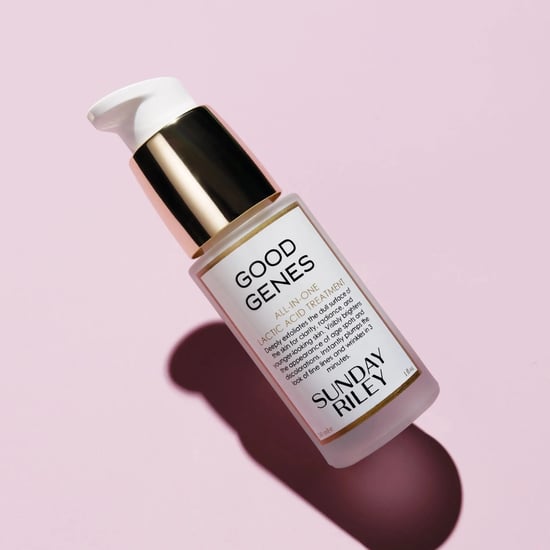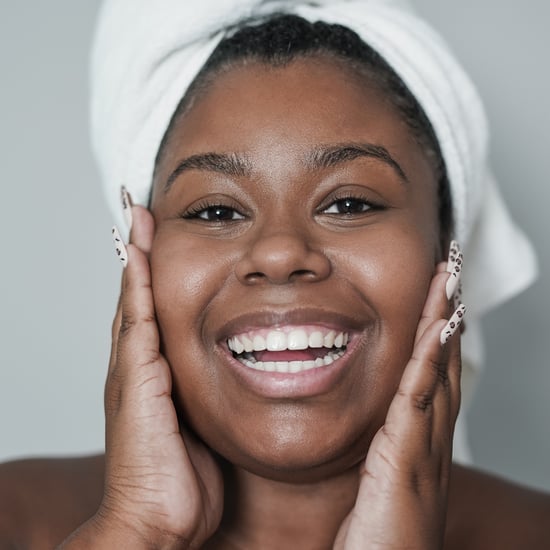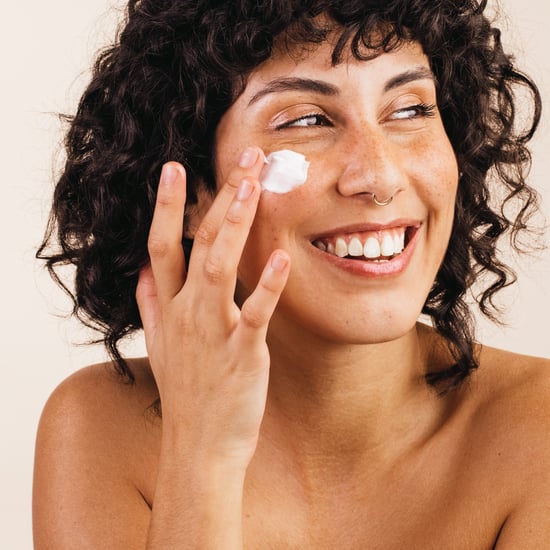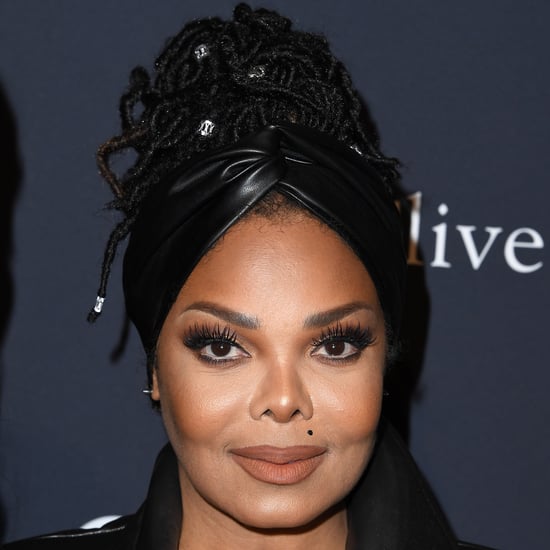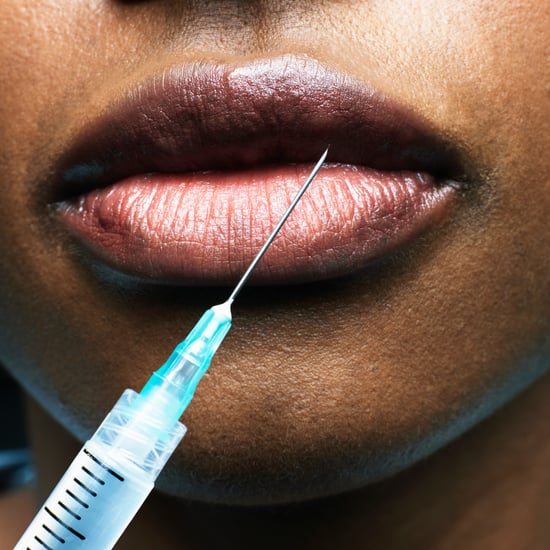
Preventative Botox Tips
Should You Get Preventative Botox? Experts Weigh In
After turning 30, something weird happened. My friends started talking about Botox injections as if they were teeth cleanings. Single women and new moms alike tried to convince me that going to the dermatologist twice a year for Botox to prevent wrinkles was just like going to the dentist to prevent cavities. My fellow millennial women weren't trying to turn back the clock on their face to look younger than they were. They were simply trying to avoid acquiring wrinkles in the first place. This was "preventative Botox."
"Botox is an attenuated neurotoxin that acts to temporarily paralyze the muscle it is injected into," explains Dr. Alexes Hazen, associate professor of plastic surgery at NYU Langone Medical Center. She notes that Botox is injected into muscles in the forehead and around the eyes to address laugh lines, crow's feet, and other lines caused by repetitive motions. Typically these lines begin to show around 35, Dr. Hazen says.
Preventative Botox is done before the lines appear, when a woman is in her 20s or early 30s. In that case, Botox prevents the repetitive movement that causes wrinkles.
Not one to judge people's decisions over their own bodies, I say, "All power to you!" But is preventative Botox something I should do, too? On the one hand, I have avoided dyeing my hair for three decades because I don't want to do the maintenance. On the other, I've never had a cavity . . .
The people I trust go both ways on the matter. POPSUGAR Beauty editor Lauren Levinson, in her early 30s, has found that "preventative moisturizing" is an effective way to avoid Botox. In a piece about why she chooses not to get Botox, she shared this tip: "Whenever I see a fine line creeping into my forehead or around my eyes or lips, I put serum, moisturizer, or oil on the area, depending on what my skin needs that day. With enough hydration, the lines go away. Poof! It sounds easy and simple, but I promise you that it works."
But for others, preventative Botox is a part of a robust skin care regime — and that includes men. POPSUGAR video host Matthew Rodrigues, age 34, also wrote about his experiences. In his case, Botox was right for him: "In my late 20s, I decided that I wanted to be a man who 'ages gracefully.' That can be translated into wanting to look as young as technologically possible, but never having someone from my high school say, 'WTF did he do to his face?!' I determined that if this was going to happen, it was better to start sooner rather than later."
Like many of my 30-something girlfriends in San Francisco, Matt wanted to get on the Botox train before he actually needed it. Dr. Elizabeth Hale, a top dermatologist in New York City, says they're not alone. "The age of when people start Botox has definitely been trending downward as people realize it is effective and safe when used properly," she told me. "People come in and they say, 'I don't want that deep line that my mom has or that my grandma has, so I'd like to start now so I never get it.'"
Is this "preventative Botox" trend just an overreaction to the fear of aging? Or is it actually reasonable for women in their 20s and 30s to begin Botox? I decided to investigate.
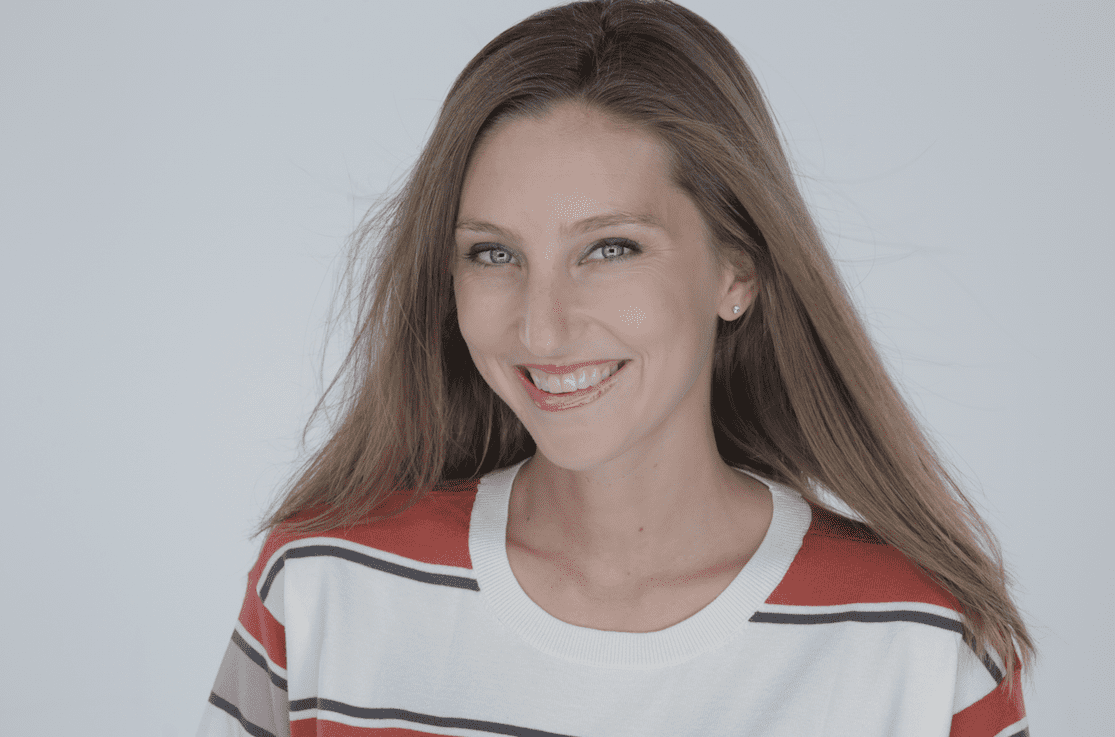
OK, Yes, Preventative Botox Is a Real Thing
The dermatologists I spoke to agree that yes, getting Botox at a young age will help prevent wrinkles and lines from developing in the first place. I learned that our face muscles work like any other muscle. The more you work them out, the more defined they will be. By getting Botox early, you prevent your face muscles from "working out" when you frown, smile, laugh, raise your eyebrows, or squint.
With regular Botox, these muscles will "atrophy" and you will not have the chance to develop deep lines and wrinkles associated with strong facial muscles. If you wait to get Botox until you're, say, 40, your face will have had more time to work out. As you get older, you will have to reverse the signs of repetitive expressions versus simply try to stop those signs from occurring.
To get more specific, here's what three different dermatologists told me about preventative Botox:
Dr. Elizabeth Hale, associate professor at NYU, says younger patients should get Botox less frequently:
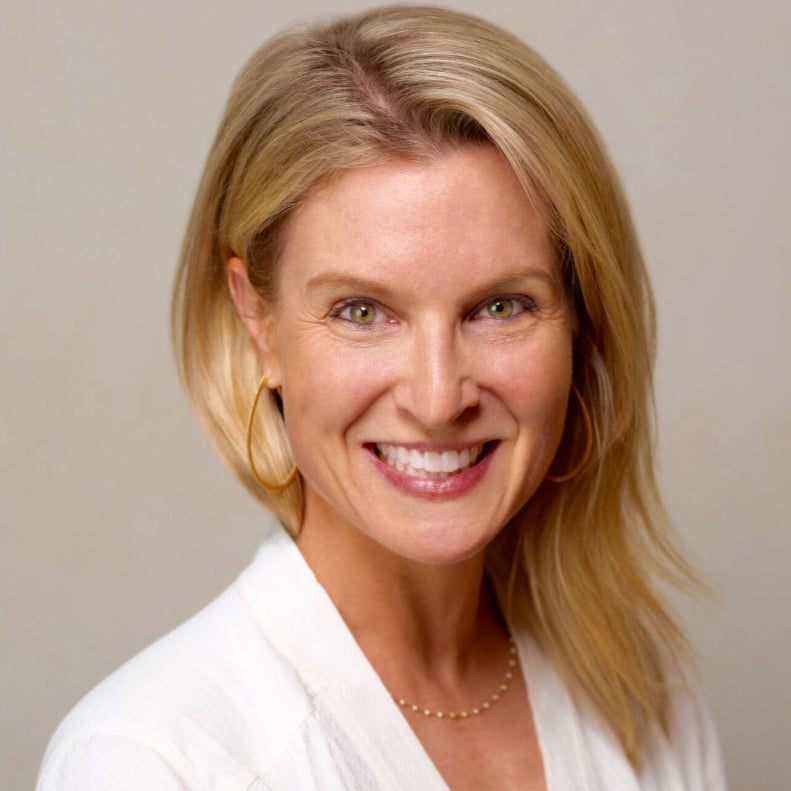
"One advantage of starting early: if you never let that muscle get so thick and hypertrophied, you'll never get such a deep furrow and you can do it in less frequent intervals."
Dr. Elizabeth Tanzi, assistant professor at George Washington University, says some young women might need it more:

"There is no such thing as too young for Botox. A good dermatologist treats the dermatologic age of the patient, not the chronologic age. A blond-haired, blue-eyed girl who frequents tanning beds may show wrinkles in her late 20s, whereas a Latina may not show wrinkles until 40."
Dr. Alexes Hazen, associate professor at NYU Langone Medical Center, recommends waiting until lines appear:
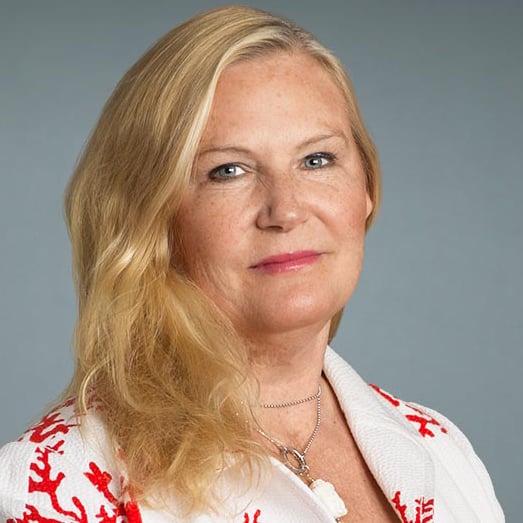
"Botox is injected into muscle in the forehead and around the eyes, whose action causes wrinkles. Botox prevents those muscles from contracting, so the skin can't form the wrinkles. Is it preventable in nature? Yes. But it seems more practical and less extreme to wait until the lines first begin to form. At that point, they are reversible."
The experts I spoke to agreed that yes, Botox can be preventative in nature and it is a reasonable solution for some women in their 20s and 30s. But this came with big caveats.
More Is Not More
Young women, beware: Botox could be your gateway drug to more extreme cosmetic surgery. "I don't want to advocate that every 25-year-old should do it preventatively," Dr. Hale explains. She notes that once you start, it's easy to get hooked. "It becomes another thing like highlighting your hair," she believes, and says it can sometimes get out of control. "I try to educate my patients. I'd rather you come back and say, 'I noticed some improvement, but it's not so dramatic.' To me, that's a win, versus someone coming back and not looking like themselves. The real goal is to keep people looking like themselves, just a more rested, relaxed version of themselves."
You should also consider genetic factors before opting for the needle. According to Dr. Hale, depending on your family history of wrinkles, preventative Botox may be more or less appropriate: "There are definitely some women I see young, in their 20s. I can tell that they're prone to specific wrinkles. They might say, 'My mother has this same line, and my grandmother does, and I just don't want it.' So I say, 'It's reasonable if we start giving it to you now, so you'll never form such a deep line.'"
When Dr. Hale comes across a young woman who has good reasons for getting Botox, she will take a different approach than she does with her older patients: she will inject them with smaller amounts and only two times per year, instead of every three months.
This is because she's not trying to "freeze them completely." Instead, responsible doctors will be sure to leave some movement so young women can emote. Dr. Hale describes her method as simply trying to "prevent that muscle from getting too strong, so they never develop such a strong frown line."
Making sure younger patients don't get totally hooked is one reason to take this pared-down approach, says Dr. Hale: "If you're starting Botox at 22, then what? By the time you're 30, you're already ready for something major. I'm not an advocate of that."
Botox can also be a trap, according to some experts. Dr. Tanzi is one of them. "By treating very young women, they may get the impression that we can stop aging altogether," she says. "This is not the case. Aging will happen even if you start Botox very young. Yes, we can slow the signs of aging down on the skin, but we cannot stop it." Dr. Tanzi says she will never inject anyone regardless of age if they have unrealistic expectations.
It's Often a Matter of Taste
Botox may prevent you from moving your face muscles and thus from getting resting wrinkles, but it's up to each woman to decide if that's a good thing. Dr. Hale is of the mind that it might not be. "I don't like the idea of freezing the faces of all of our young women," she admits.
"Expressing yourself is very important," Dr. Hale points out, "especially at the time in your life where you're meeting potential mates or getting your first job. There are very important reasons you want to be able to express yourself." For someone who administers Botox, Dr. Hale doesn't love the overdone look: "My personal aesthetic is I like expression."
One beauty icon who agrees? Jennifer Aniston. The actress told us, "The muscles and our faces need to move, especially when they're 20!" She thinks about her face muscles like every other muscle: "If I don't go to the gym forever and my legs, my glutes, and my quads don't move, eventually they start to atrophy, which means they lose their natural ability to be strong. If anything, you want the muscles in your face to sort of tighten and move."
After talking to experts about using Botox for preventative reasons, I wanted to know about alternatives. I reached out to A-list facialist Joanna Vargas, who made a valid — and ironic — point about the downside of starting Botox young: "I think it ages you," she told me. "Everyone can tell you have had it done, and it looks fake. I don't think anyone wants to walk out of a room and have everyone discussing what you have done to your face."
I tend to agree. So what's a 32-year-old woman like me to do if I want to look like that "more rested, relaxed version" of myself without resorting to injections? Luckily, there are a lot of options — including accepting the fact that you're getting older.
There Are Less Invasive Prevention Steps

You can opt out of the frozen-face trend and still minimize the fine lines on your face, no needles necessary. Talking to experts, I got a good sense of how to go about this.
"I never judge a woman for seeking injectables. I tend to attract women who are seeking alternatives to that," Vargas explains. She can count Julianne Moore, Naomi Watts, Rachel Weisz, Maggie Gyllenhaal, Sofia Coppola, and Jenna Dewan Tatum as clients.
Vargas suggests "results-oriented facials" to any woman considering Botox, and she offers various options at her salon that use microcurrents, antioxidant-spiked serums, or pure oxygen to reduce signs of aging. "You might be surprised at how much you get out of it. I absolutely don't think Botox is necessary. I'm in my 40s and have never done it," Vargas admits.
The experts I spoke to offered a wide range of noninvasive preventative measures, including protecting yourself from sun damage and choosing strategic products. Based on our conversations, here's what I'm considering instead of Botox:
- Use Sunscreen: Protecting yourself from the sun every day will help minimize the appearance of wrinkles. While you might like a little glow, exposure to sun puts your skin cells into survival mode and will rapidly age you.
- Wear Sunglasses: Consider wearing sunglasses 365 days of the year. People tend to squint in the sun, rain, or cold, causing crow's feet. Sunglasses will help you avoid those motions, and thus Botox.
- Be Mindful of Your Facial Motions: Botox is preventative because it keeps you from raising your eyebrows, frowning, squinting, or engaging in other repetitive motions. So can you just stop doing those things if you want to avoid wrinkles? Yes, says Dr. Hale. "It's easier said than done, but I think being mindful of it is the first step." Next time you notice yourself furrowing your brow or raising your eyebrows, take a nice deep breath and try to relax your face.
- Don't Smoke: It's a no-brainer, but in addition to health concerns, smoking increases fine lines around your lips, giving you "smoker's mouth."
- Don't Use Straws: "This is always funny," Dr. Hale admits. "The dentist will tell you don't stain your teeth and use a straw even when you drink coffee. But that repetitive pursing of your mouth can lead to premature development of lines around your mouth, or perioral wrinkles."
- Reduce Stress: Stressed out? You're more likely to furrow your brow more. If you want to look like a more rested and relaxed version of yourself, make sure you prioritize rest and relaxation.
- Opt For Results-Oriented Facials: This is a tip from Vargas. Her Triple Crown Facial, for example, uses microcurrent technology to "sculpt the face and drain puffiness." It starts at $250.
- Use Lotions With Hyaluronic Acid: Dehydrated skin shows lines and wrinkles even more. Look for moisturizers with hyaluronic acid. "HA is the same ingredient in fillers because it has such a great ability to hydrate," Dr. Hale explains. Water helps our skin look plump, but as we get older, our skin can't hold water as well. Hyaluronic acid fixes that. (Options ahead.)
- Drink Eight Glasses of Water a Day: In addition to hydrating on the outside, you need to hydrate from the inside. Drinking fluids ensures that nutrients are delivered to cells and keeps them hydrated and plump.
Lotions With Hyaluronic Acid
Opting Against Preventative Botox
At 32, I still won't get Botox, preventative or not. Yes, I have some lines appearing on my forehead and signs of crow's feet, but after talking to these experts, I realize there are less invasive ways to be proactive about my antiaging routine. If you're feeling the pull of preventative Botox, consider why you're doing it. Is it because you have a very specific issue you want to avoid? Or because you're being influenced by those around you to fix a problem you don't even have yet? If it's the latter, you might just need a vacation to get that refreshed look you crave — just be sure to pack your sunglasses and sunscreen.
